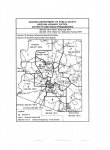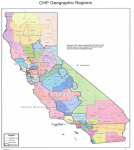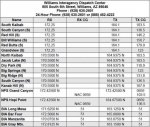I just checked out the pdf and csv downloads for Middlesex County Mass that is located here -
Middlesex County, Massachusetts (MA) CSV and PDF Downloads
Both the csv and pdf seem to have exactly the same info. Both had the VA Hospital in Bedford, the Hanscom AFB TRS, and 1 Lowell Natl Park freq. However - there were no listings for FBI, DEA, Army Corps of Engineers, Minuteman Natl Park, FEMA bunker in Stow,, DOT in Cambridge, Lincoln Lab in Lexington, nor any of the Hanscom AFB conventional VHF highband channels.
I am pretty sure that some of those federal channels can be found elsewhere in the RRDB.
I will repeat what I said earlier. Maybe the best way forward is -
1. Make sure that state and federal channels are accurately tied to the appropriate counties in the downloadable RRDB.
2. Add info in the Wiki that explains the various dispatch centers / districts / field offices / bureaus etc - and presents a more holistic view of various agencies.
PS - paysonscanner, I think that we are talking past each other. Or perhaps we are highlighting slightly different aspects of perceived problems with the RRDB.
PPS - DaveNF2G - when you do the Sentinel download, do you get any FBI or DEA channels? Do you get different federal channels than appear in the online RRDB for a particular county?
Maybe we are talking past each other. I just want to emphasize that frequencies in the database need to reflect the agency's organization, otherwise how does one know which frequencies to pick? If you are traveling in Northern Arizona, you likely want to hear DPS (the highway patrol) and you really don't care about what counties you are in when doing so. You care about what DPS district you are in. Here is a map of the DPS districts my dad found on a Google search many years ago. He can't remember where he got it. It's probably not current.

If someone can read the map and know what highway they're on they don't need to know the counties. The Kingman District covers most of northern Coconino County, why waste space and time listing the Kingman District in both Coconino County and Mohave County? Other districts like Yuma cover La Paz, Yuma and portions of Maricopa and Pima Counties. Are you saying that AZ DPS should be shown in each county and not have a statewide list? It would seem so as you seem to state that federal agencies should not have their own pages as they should be listed in the county, the county driving the entire database.
Take a look at the California Highway Patrol database page. It is listed first by Division, then by dispatch center then by area office. This is the way the agency is organized. It's important to show how the agency's radio system is organized as Divisions have a set of common frequencies for tacs, division wide coverage for pursuits crossing multiple area office boundaries (district blue channel) and for extenders used by officers while working inside offices as well as the agency's UHF frequencies. UHF is used by the dignitary protection and state facilites security entities of the CHP. If the agency's organization was disregarded and put in the wiki pages, if the dispatch center's were not listed except in wiki, then how would you list the agency? Close the state agency pages and put the frequencies in each county?

It would be very confusing if the CHP was buried in each county page. A big picture of the agency is lost because a user would have to go to the wiki pages to get that holistic view of the agency. The existing CHP page gives us the holistic view of the agency-division-field office-dispatch center relationship that drives how frequencies are assigned. Should users be forced to look at individual county DB listings and have a browser tab open showing that wiki page "holistic view" of the agency and be forced to switch between tabs? Should they hunt and peck through the county pages one at a time trying to figure out the communications system for the entire agency? How will a person know the counties in a division, region, district, area office, platoon or however an agency is subdivided unless they see the whole agecny first, then the various subdivisions of the agency? Are they supposed to figure that out from the bottom up (the county) instead of the logical way of from the top down.
I don't know if I'm talking past you on this. I tried to show my understanding of what you have said and apply that same logic to existing listings. The database would change a lot if what I think you are saying is applied throughout.
Now a word from my dad, who wants to stick to the origninal topic of this thread, the BLM organization. Remember that topic? National Forests and BLM districts don't always follow county lines. Individual ranger districts can be located in many counties, let alone an entire national forest. The database page lists national forest in a state and if each ranger district or a group of ranger districts on a forest have a different forest net, the listing shows that. A BLM district is similar to a national forest and a field office is similar to a ranger district in the administrative organization of the BLM. The ranger districts aren't listed by themselves without grouping them under a national forest, so why leave out the district when listing field offices of the BLM. Sometimes the multiple BLM field offiices in a district have one district net to share, sometimes each has a net and sometimes 2 or 3 nets are used for a district having more than 2 or 3 field offices, just like national forests and ranger districts. Here is the comparison of the two agencies
U.S. Forest Service . . . . . . . . . . . . . . . . . . . . . . . . . . . . . . . . . . . . . . . . . . . . . . .
Bureau of Land Management
Chief - Washington Office . . . . . . . . . . . . . . . . . . . . . . . . . . . . . . . . . . . .. . . . . . .Director - Washington Office
Regional Foresters - 9 Regional Offices . . . . . . . . . . . . . . . . . . . . . . . . . . . . . . State Directors - 12 State Offices
Forest Supervisors - about 110-120 Forest Supervisor's Offices
* . . . . . . . .District Managers - 49 Districts
**
District Rangers - about 500 of these . . . . . . . . . . . . . . . . . . . . . . . . . . . . . . . . .Field Office Managers - 134
***
Work Stations/Fire Stations - Lots of these . . . . . . . . . . . . . . . . . . . . . . . . . . . Field Stations - just a few/Fire Stations -a few dozen
* There are 155 National Forests, but many have been combined administratively to save money. There are 20 "National Grasslands," which can be administered by a ranger district, be a ranger district by itself or as in the case of the Dakota Prairie National Grasslands, is grouped under a grassland supervisor instead of a forest supervisor.
** 48 are districts, one national monument (Grand Staircase-Escalante) is at the district manager level, reporting to the State Director
** This number includes national monuments (4 different fed agencies manage these not just NPS) and national conservation areas, which are headed by a manager that reports directly to the district manager. Some of these are smaller and are managed by field offices.
If the database used the same logic for both of these agencies, the Forest Service would have 500 ranger districts listed with no reference to the national forest they belong to. This would be inaccurate as national forest nets and dispatching are designed to cover a national forest or national forests combined under one Forest Supervisor. The same applies to the BLM whose nets and dispatching are designed to cover a district. But the RR DB doesn't use the same logic for the BLM, it leaves out the districts like they don't exist. Sometimes 3 field offices will have the same net frequency and repeaters can be shared between field offices, but frequencies and repeaters are duplicated by showing them under each of the field offices.
Wew! Dad worked on his part all day using Word, like he usually does. I'm up super early this a.m. cause I can't sleep so I posted all of this.





